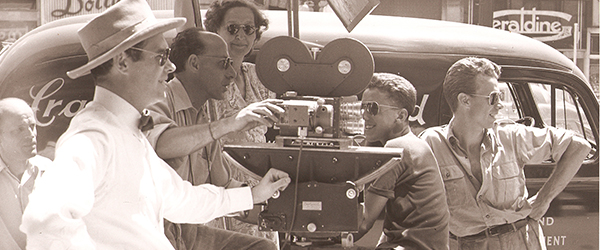How to Keep Your Crew In Line: Lessons from the 1st AD
Making a movie is hard work. The hours are long. The resources are scant. Actors can be difficult and crewmembers can be cranky. Frankly, a film shoot can be a disaster waiting to happen. If not for one key position…
On most sets, the one person keeping the whole thing from spiraling off into abject chaos isn’t the director, or even the producer—it’s the 1st AD.
Typically, the 1st AD functions as the production’s designated adult. Part traffic cop, part project manager, the AD’s job is to push the shoot forward, making sure each day wraps with quality footage and minimal harm done to personnel, property or the film’s budget.
What the AD is and does was the subject of Film Independent’s December 8 Know Your Crew event in Los Angeles featuring guest speaker Chris DeBenedetto, a veteran Assistant Director with over 50 feature film and TV credits on IMDb.
“In a nutshell, we run the set,” said Chris. “We’re the managers and planners on the ground. The 1st AD is the loud guy.”
He explained how the job differs from that of the Line Producer, who typically creates a pre-production budget and schedule that, in all likelihood, is only theoretical.
“I…bring the realism. I always have to re-do the schedule no matter what. I’m the one accountable,” he said adding, “An AD is mainly there to make sure your movie happens once its green-lit.”
When beginning a new project, Chris first reads the script to identify and isolate the screenplay elements in practical terms, anticipating logistical problems involving everything from props and locations to travel and costuming.
Chris then puts his expertise into creating a shooting script and workable production schedule. Invariably, these documents become the backbone of the entire production.
When asked what sort of problems might drag down a normal shoot, Chris flagged a few things to watch out for…
“Animals. Kids. Special Effects. Gore,” were just a few, noting, “Location is one of the biggest factors.” He also cautioned against the time-suck and energy-drain of ill-planned company moves.
When asked about the AD’s relationship to the Director, Chris explained that the ideal 1st AD was a voracious gatherer of information, but a selective dispenser of it.
“If you’re a good 1st AD, you’ll shield [the director] from all the things they don’t need to hear,” he said.
Chris outlined his routine for a typical day on set, starting with a private rehearsal between Director, DP, and relevant department heads. Following that, a blocking rehearsal with the entire crew. After that, the Art and Electric departments work to stage and light the set. Once lit and staged, a full rehearsal with cast follows. Then, shooting begins.
It the AD has done their job everything runs like clockwork. But the key, selective or otherwise, is communication. “Everyone is begging for information. If you give it to them, the set runs smoothly.”
Finally, Chris brought out his tablet to share examples of shooting schedules, call sheets, production reports and a day out of days form.
Offering one last piece of advice, Chris emphasized organization and preparation, warning budding ADs, “Try not to kill yourself before you even start.”
By the end of the event, it became clear that the Assistant Director is at once the glue that holds the shoot together, but also the lubricant that greases the gears between its myriad moving parts.
Glue and grease seem like an unlikely pairing, but if there’s anyone who can make unlikely things happen—and happen well—it’s the AD.
For more information about future Film Independent Events check our Events Page. For more information on becoming a Member of Film Independent, click here.
Matt Warren / Film Independent Digital Content Manager
